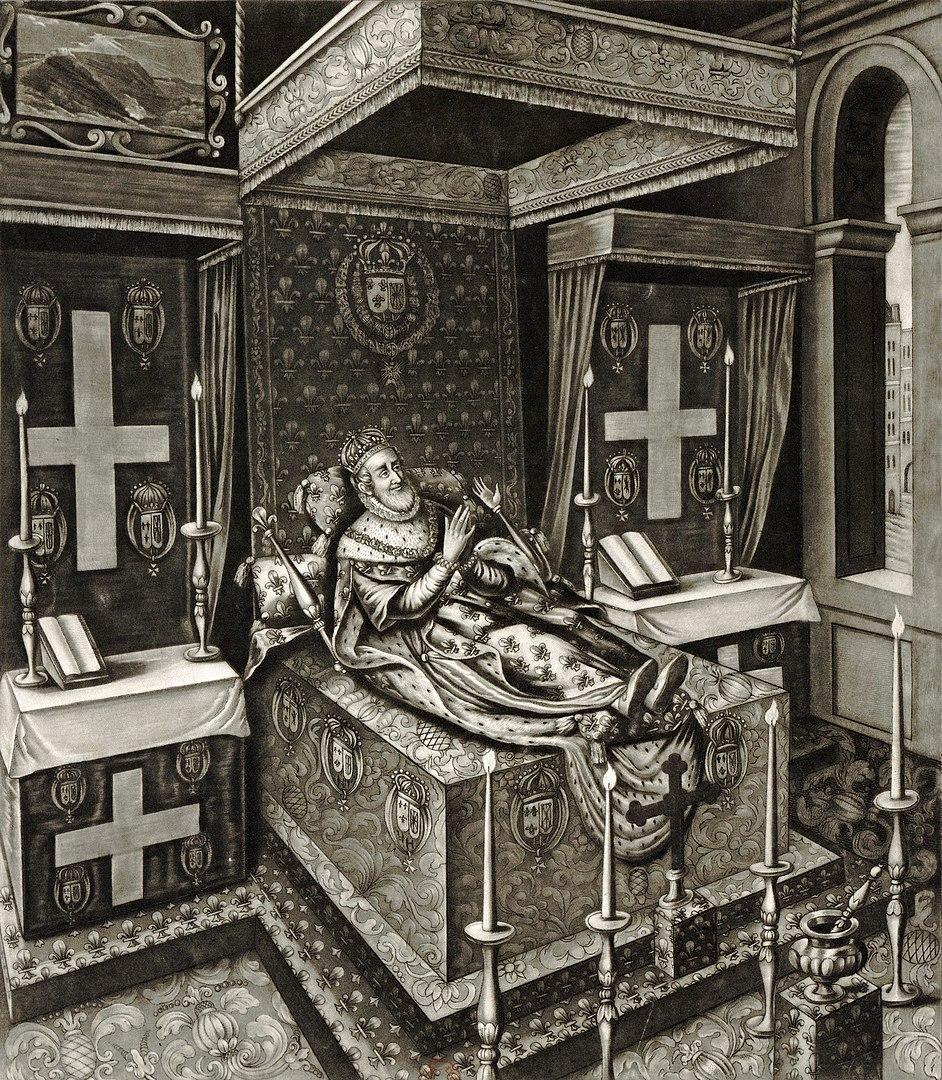"I am yours after death, if it be possible." Henrietta Maria to Charles I, 31 August (Old Style) / 11 September, 1642 Today Mayapple Books announces the release of My Queen, My Love: A Novel of Henrietta Maria, being the first volume of the Henrietta of France Trilogy. I hope to write the other two volumes over the next few years. From the Amazon page:
The youngest daughter of Henri IV, the first Bourbon King of France,
Henriette-Marie always knew she would have to marry a prince. When the
Prince of Wales, Charles Stuart, travels through Paris he sees her
dancing at the Louvre and within two years a marriage is arranged.
However, Henriette is Catholic and Catholicism is banned in England. In
preparing to become Queen of England, Scotland and Ireland, Henriette
has no idea of the obstacles that must be overcome before she can find
happiness with Charles. The main hindrance, she soon realizes, is not
the difference in religion but Charles' best friend, George Villiers,
the handsome Duke of Buckingham, who is resolved to subdue Henriette
to his will. Buckingham forgets that Henriette is also half Medici and
underestimates her determination to succeed as well as the depth of her
love for Charles. My Queen, My Love is the first novel in the
Henrietta of France Trilogy by acclaimed author Elena Maria Vidal. It
describes the early years of the tumultuous marriage of Charles I and
Henrietta Maria which preceded the English Civil Wars of the Seventeenth
Century.
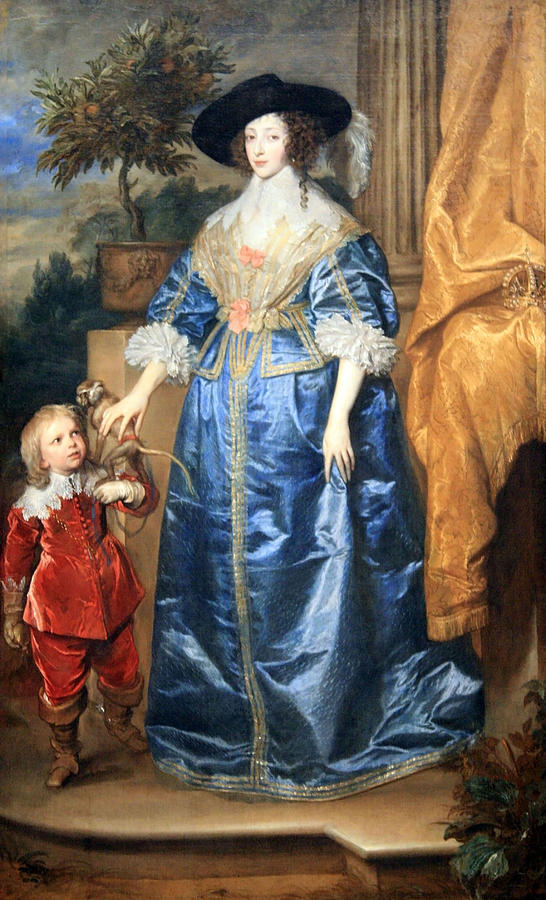
As
a teenager I had in my room a print of the Van Dyck portrait of
Henrietta Maria, Queen of England, the original of which is in the
National Gallery of Art in Washington, D.C. Maryland or Mary's Land, my
home state, was named in honor of the Queen of the ill-fated Charles I;
the colony was founded as a refuge for Roman Catholics. When exploring
the old church yards of Catholic parishes in southern Maryland, the
names on the gravestones are English rather than the usual Irish,
Polish, Slovak and German. It no doubt pleased the Catholic Queen that
there was a place where her brethren in the faith could go to escape the
persecution in their native land.
Half Bourbon and half Medici, the life of Henrietta Maria of
France (1609-1669) was turbulent from the beginning. Her father, the
famous Henri IV, was assassinated when she was an infant. At fifteen
years old she was sent to marry Charles Stuart, who was a decade or so
older. After the initial clashing of cultures and personalities, theirs
became one of the most devoted in the history of royal marriages, and
was blessed with nine children. During the troubles which led to the
English Civil War, Henrietta Maria became a liability to Charles because
of her religion and her meddling, both perceived and actual. But her
courage and her devotion fueled the royalist cause, as she sold her
jewels to raise money for arms and led soldiers to aid her husband.
Some early endorsements of My Queen, My Love:
"Elena Maria Vidal brings history to life again with the story of Queen Henriette Marie, complete with an unlikely but true love story of the Queen and King Charles I of England, a formidable personal enemy in the menacing Duke of Buckingham, lots of well-researched period details, and the matters of Christian faith behind many of the conflicts. An antidote to the Whiggish story that is often passed off as history in America, with its anti-monarchical bias. Though Henriette Marie is not nearly as well known as another maligned consort, Marie Antoinette, Americans should learn her story because, coming after Jamestown's founding, she was their queen". —John Beeler,
A Conservative Blog for Peace
“Henrietta Maria’s life is so richly improbable that it’s unusual that she hasn’t attracted the attention of more historical novelists. Now, we have an exciting, beautifully-researched, and sympathetic first installment in a new trilogy inspired by this remarkable seventeenth-century queen.” —Gareth Russell, author of
A History of the English Monarchy: From Boadicea to Elizabeth I and
An Illustrated Introduction to the Tudors "Dreams of princesses, fairy tale palaces, and living happily ever
after collide with the realities of favorites, mistresses, courtiers,
and intrigues in the lives of Marie de Medici and her daughter Henrietta
Maria in this first volume of Elena Maria Vidal's Henrietta of France
trilogy. Vidal depicts the religious conflicts of the seventeenth
century vividly in this historical novel, as the marriage of King
Charles I of England and Queen Henrietta Maria overcomes many obstacles
of language, faith, and even different calendars. Even knowing how their
story ends, the reader looks forward to Vidal's delicate and dramatic
retelling."—Stephanie A. Mann, author of Supremacy and Survival: How Catholics Endured the English Reformation
“'Henrietta Maria - for those who know of her at all - is one of the most divisive figures during one of the most volatile periods in British history. With
My Queen, My Love, the first in her trilogy of Henrietta Maria, E.M. Vidal has brought Henrietta Maria's passion and character to life with remarkable skill'.” —Andrea Zuvich, author of
Sex and Sexuality in Stuart Britain
“Like the works by Sharon Kay Penman and other exceptional historical fiction authors,
My Queen, My Love takes the reader on an intense journey back in time, allowing the reader to feel immersed in the era, the events, the people, the loves and the tragedies (and so much more). Beautifully told.” —
Readers’ Favorites
“Elena Maria Vidal’s new historical novel captivated me from the beginning. The fascinating story of the often tumultuous life of Henrietta Maria of France, a devout Catholic Queen living in post-Reformation England, is beautifully written. This will especially be appreciated by readers who want to immerse themselves in the world of 17th century England and France. The characters are well-developed and believable. I highly recommend this remarkable book to all who enjoy a compelling story.” —Ellen Gable, award-winning author
“
My Queen, My Love chronicles the passionate marriage of Charles I, grandson of Mary Queen of Scots, and Henrietta Marie of France during the perilous years of 17th century England. Naive Henriette’s teenage love for her husband and King must navigate English hatred of her Catholicism. Elena Maria Vidal envelops readers in period detail with each rustle of silk, every whispered prophecy. A richly told tale of intrigue and betrayal, loyalty and hope,
My Queen, My Love rushes headlong toward the tumultuous history of the English Civil War.” —Mary Jo Anderson, author of M
ale and Female He Made Them
 |
Charles I and Henrietta Maria
|
 |
Their children: Mary, James, Charles, Elizabeth and Anne
|
Some historical background from the Royal Collection Trust:
Henrietta Maria, youngest daughter of the French King Henri IV and Marie de' Medici, was Queen Consort to Charles I, and mother of both Charles II and James II. Henrietta Maria shared her husband's love of the arts, and was a keen patron of artists, sculptors and architects.
Henrietta Maria was descended from the Medici family on her mother's
side. The Medici were some of the greatest and most powerful patrons of
the arts across Europe, from the fifteenth century onwards. Henrietta
Maria would have grown up surrounded by the presence of artists and
works of art in the service of monarchy and magnificence. Henrietta
Maria married Charles I in 1625. The sculptor Hubert le Sueur
came to London as part of Henrietta Maria's entourage, and it was
Henrietta Maria who was responsible for the arrival in England of the
painter Orazio Gentileschi, and his daughter, Artemisia. (Read more.)










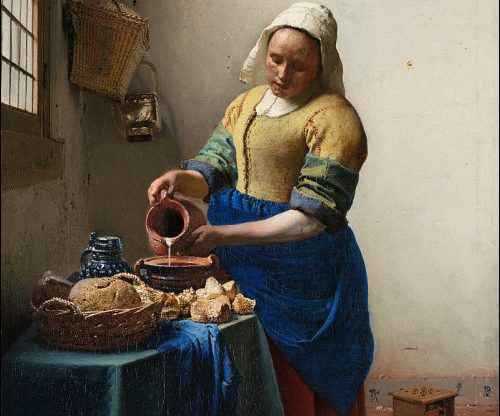

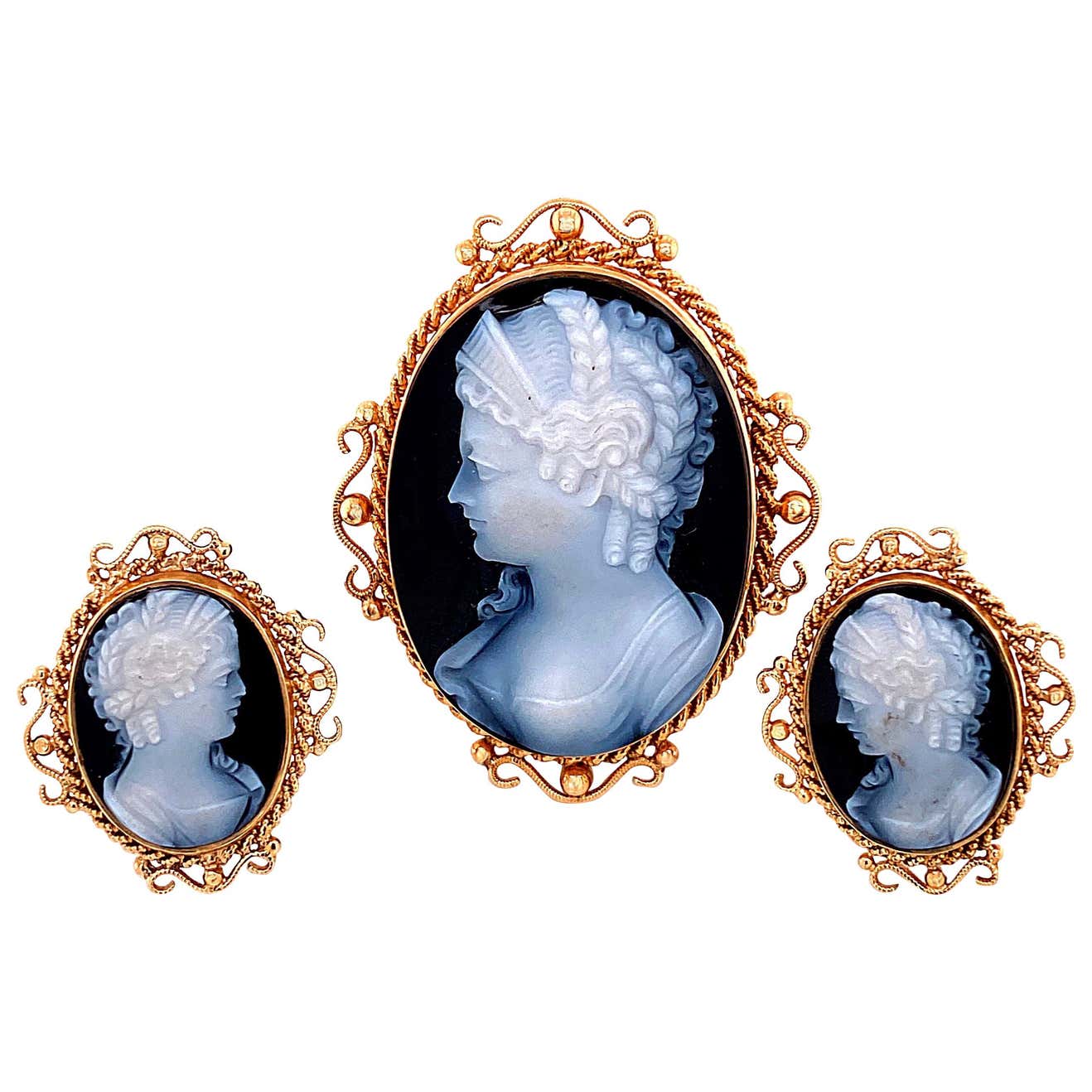
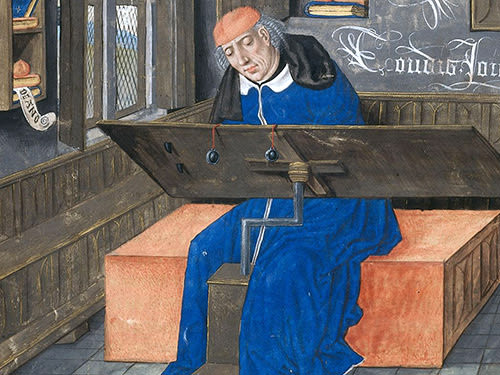




.jpg/800px-Si%C3%A8ge_d'Orl%C3%A9ans_(1428).jpg)




